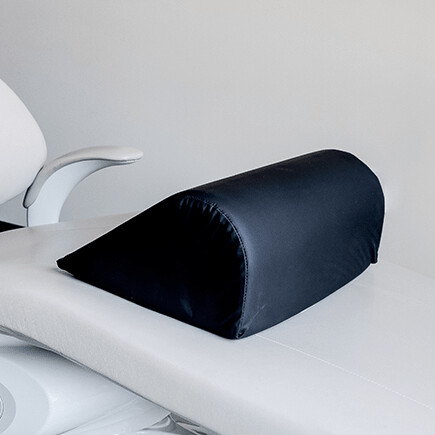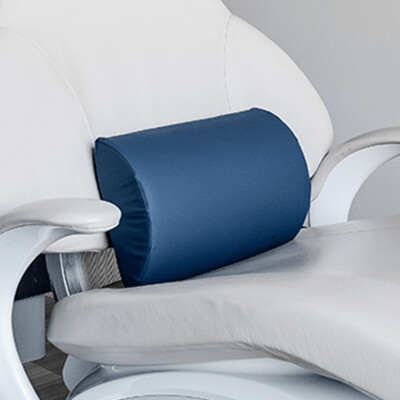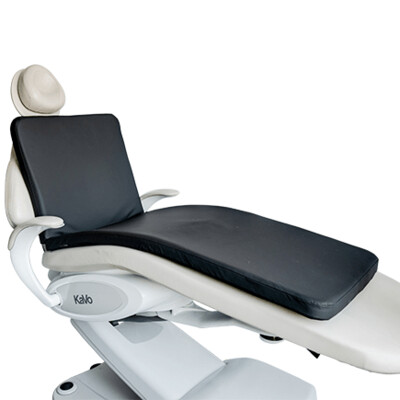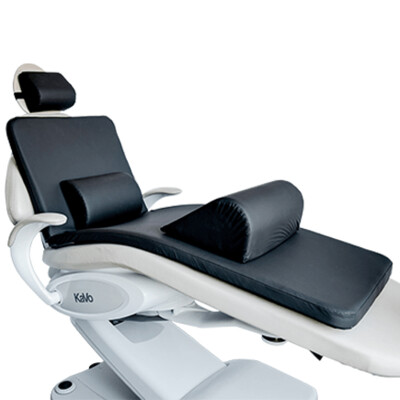The Most Common Causes of Neck Pain in Dentists

Musculoskeletal disorders, most commonly neck pain, are frequent contributors to work dissatisfaction for dentists. Many studies have been conducted where anywhere from 40% to 72% report ongoing neck pain. Neck pain in dentists is unlikely to ever fully go away, but there are things that dentists can do to dramatically reduce their pain levels.
Why is Dentist Neck Pain Such a Common Occurrence?
Dentist neck pain tends to be a common occurrence because most dentists do not operate with ergonomic support in their office. Often, not using lupes (a tool that allows you to keep your head upright while looking downward), not paying attention to the ergonomic structure of the chair used, and not having a clear track lighting system can create neck pain. Improper patient positioning can also cause issues. Dentists need to ensure that patients are positioned at the right height and the right angle for dental work.
The other part of this common occurrence is the work itself. Dentists are required to keep their muscles contracted while working on a patient’s mouth. Any motion that requires sustained muscle contraction will contribute to muscle pain or soreness.
Ergonomic Support is the First Step
Typically, the first step in helping dentists with their neck pain is to evaluate their current dental office setup. Everything from the chairs they use to the lighting apparatus and instruments needs to be evaluated. The goal is to make sure that dentists are using their space in the most ergonomic way possible to prevent musculoskeletal pain.
Dental Headrests are the Key to Pain-Free Dentistry
Utilizing a dental headrest is the best way to achieve a more ergonomic work environment for dentists, contributing to a reduction in physical strain and fatigue. These headrests offer comfortable support while promoting proper patient alignment, allowing dentists to keep their spine and neck in neutral positions during patient examinations and procedures.
By providing a stable platform for the patient’s head, dental chair headrest allows the dentist to maintain a natural and comfortable posture, minimizing the risk of musculoskeletal issues associated with prolonged periods of leaning or awkward positioning. This ergonomic advantage not only enhances the dentist’s overall comfort but also promotes greater precision and focus, ultimately benefiting the quality of patient care.
What Else Can be Done to Alleviate Neck Pain in Dentists?
Even with ergonomic considerations, most dentists will still experience neck pain. Perfect posture and an ergonomic set-up for work won’t solve the problem that the body (while working) must remain in a state of contraction. The muscles in sustained contraction end up fatigued. The best way to alleviate that leftover pain from a dentist doing their job is to practice stretching along with specific exercises.
Neck, head, and shoulder stretches and exercises are the most beneficial for neck pain. Stretching frequently can help with ongoing pain and prevent additional pain.
There are four stretches that are worthwhile for all dentists:
Cross-Body Stretch: Stand straight and position both arms at your sides. Then take the right arm and stretch it over your body, reaching with your right hand as far as you can toward the wall. Take your left hand and cup your forearm (just under your elbow). Gently press and hold your right arm closer to your body. Now, repeat on the other side.
Shoulder Rolls: You can sit or stand for this stretch. Take your shoulders and scrunch them upward toward your head. You should feel a tightness in the space between the shoulder and the neck. Squeeze and hold. Then drop your shoulders. Repeat five times.
Neck Rolls: Be careful with this exercise. Make sure that you are tucking your head tightly to your body. Then, move your head gently around the neck, slowly. You can raise your shoulders up while performing this stretch to help protect your neck.
Chin Tucks: Sit down with your back straight. Tuck your chin so that your chin is touching your neck. Hold for two seconds. Then, stretch your neck back so your chin is pointing up toward the ceiling. Hold this position for two seconds. Repeat five times.
Try to perform these stretches during breaks and at the beginning and end of each work shift. Regularly performing these exercises can help you reduce or potentially even eliminate your neck pain.
Find the dental headrest and chair accessories you need to reduce neck pain today. Shop online at the Crescent Products store.



